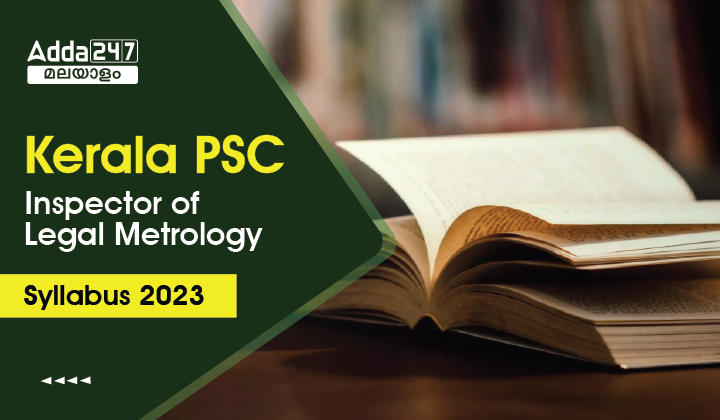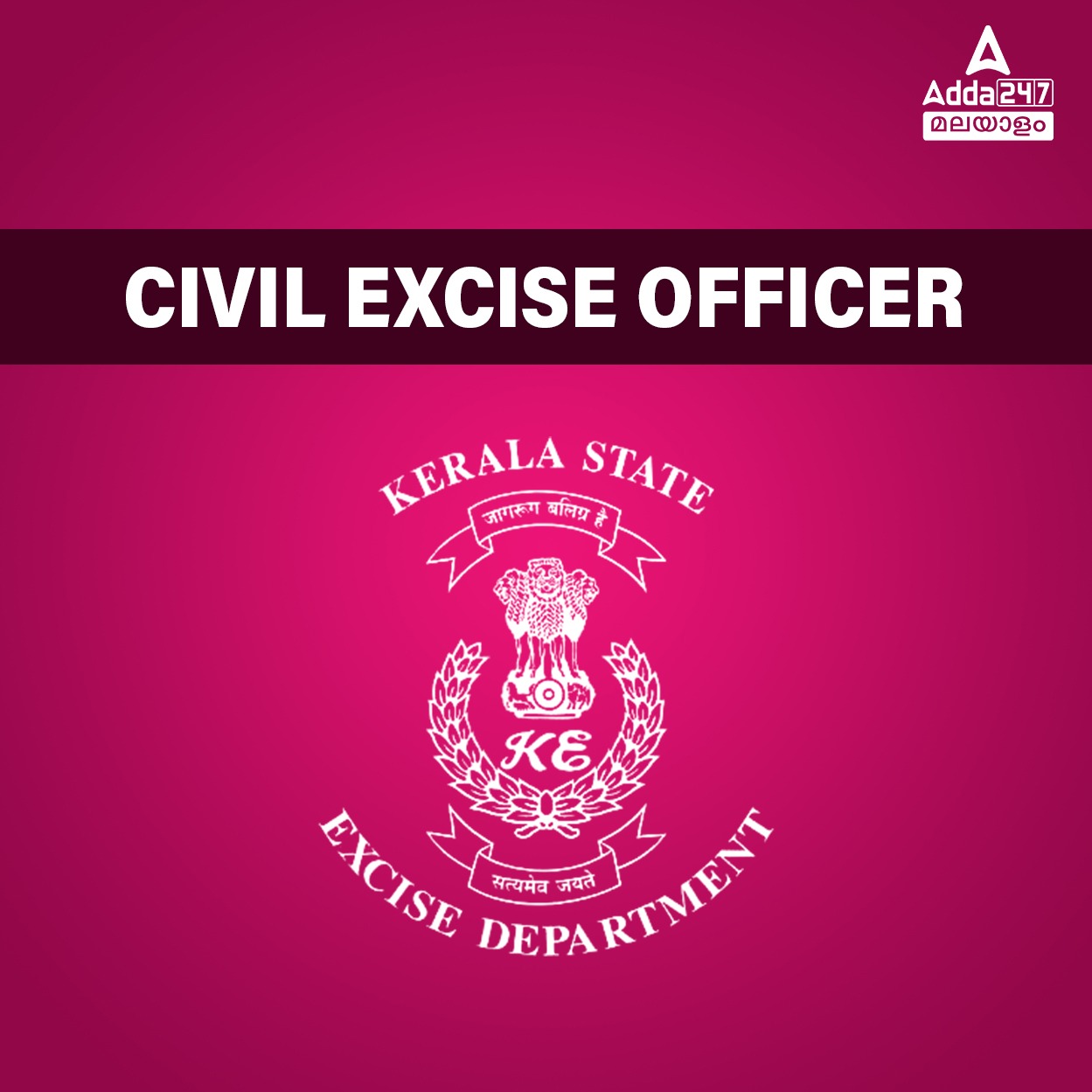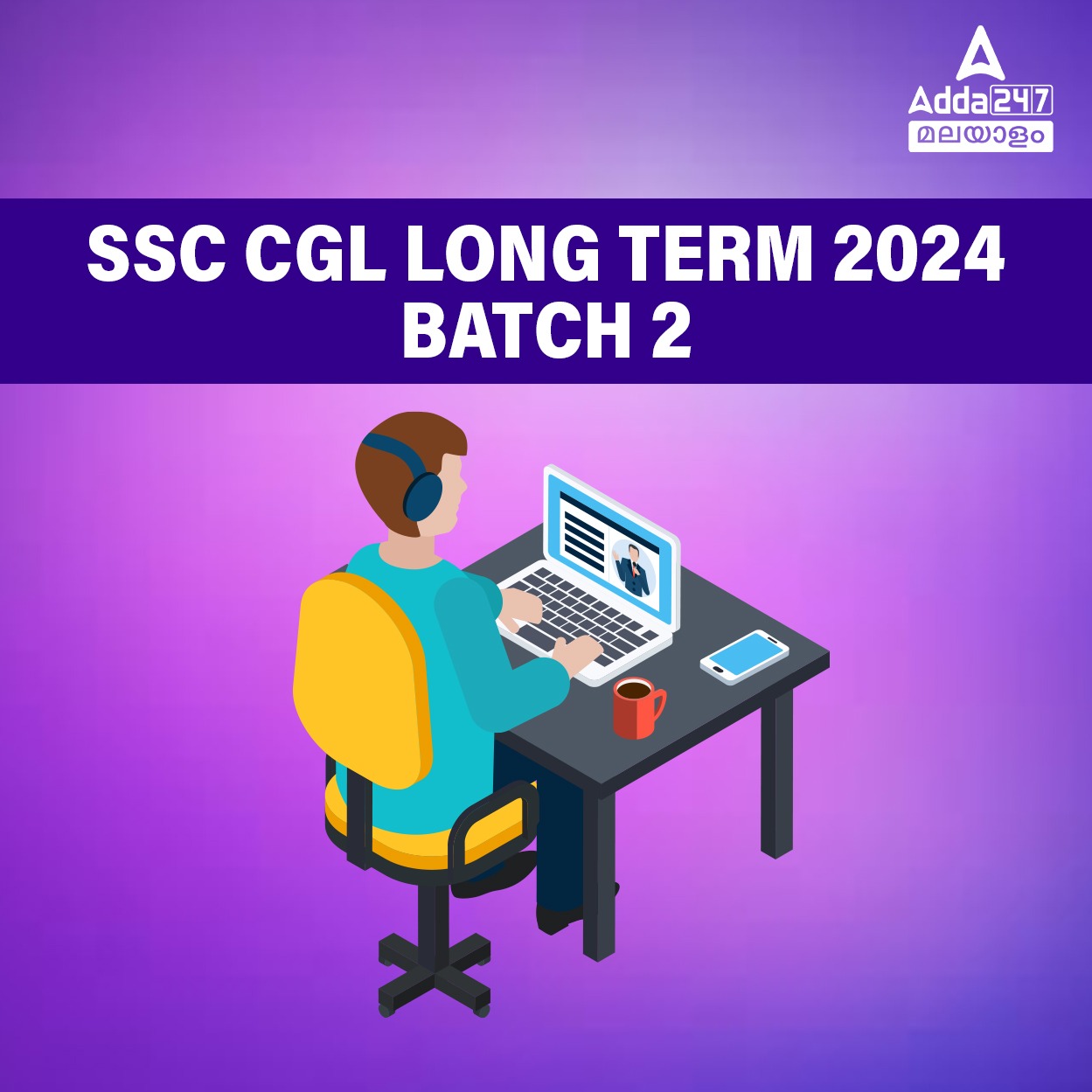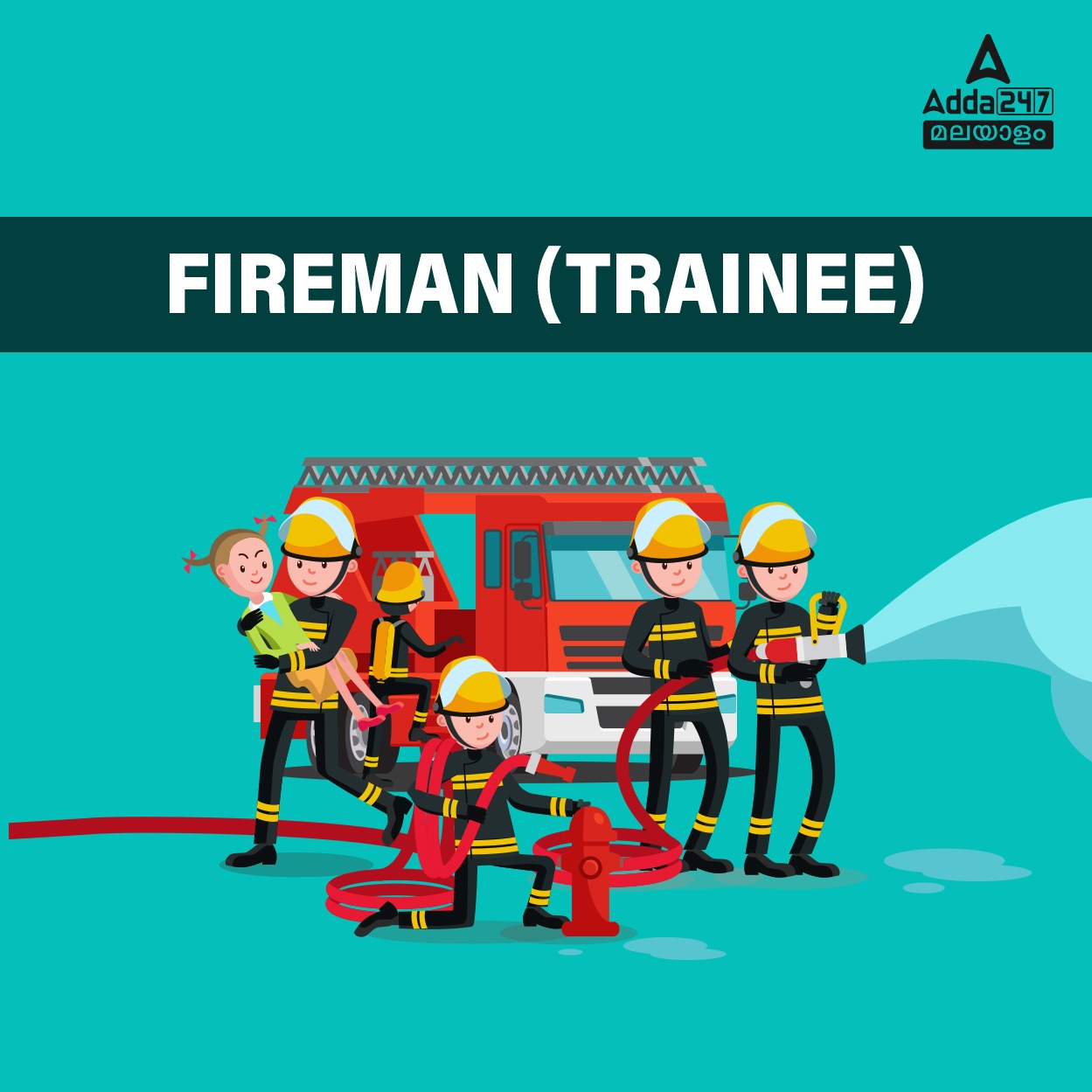Table of Contents
കേരള PSC ഇൻസ്പെക്ടർ ഓഫ് ലീഗൽ മെട്രോളജി സിലബസ്
കേരള PSC ഇൻസ്പെക്ടർ ഓഫ് ലീഗൽ മെട്രോളജി സിലബസ്: കേരള പബ്ലിക് സർവീസ് കമ്മീഷൻ കേരള പിഎസ്സി ഇൻസ്പെക്ടർ ഓഫ് ലീഗൽ മെട്രോളജി പരീക്ഷാ സിലബസ് 2023 പുറത്തിറക്കി. നിങ്ങൾ വരാനിരിക്കുന്ന പരീക്ഷയ്ക്ക് തയ്യാറെടുക്കുകയും വിശദമായ സിലബസ് അറിയാൻ ആഗ്രഹിക്കുകയും ചെയ്യുന്നുവെങ്കിൽ, നിങ്ങളുടെ തിരയൽ ഇവിടെ അവസാനിക്കും. ഈ ലേഖനത്തിൽ വരാനിരിക്കുന്ന കേരള പിഎസ്സി ഇൻസ്പെക്ടർ ഓഫ് ലീഗൽ മെട്രോളജി പരീക്ഷയുടെ വിശദമായ സിലബസ് ഞങ്ങൾ നൽകും.
ഇൻസ്പെക്ടർ ഓഫ് ലീഗൽ മെട്രോളജി സിലബസ് 2023
ഇൻസ്പെക്ടർ ഓഫ് ലീഗൽ മെട്രോളജി സിലബസ് 2023: കേരള പബ്ലിക് സർവീസ് കമ്മീഷൻ ഇൻസ്പെക്ടർ ഓഫ് ലീഗൽ മെട്രോളജി സിലബസ് പുറത്തിറക്കി. പരീക്ഷയ്ക്കുള്ള തയ്യാറെടുപ്പുകൾ ആരംഭിക്കാൻ സമയമായി. പരീക്ഷയിൽ വിജയിക്കുന്നതിന്, സിലബസിനെക്കുറിച്ച് വ്യക്തമായ ധാരണ ഉണ്ടായിരിക്കണം, അതിനാൽ കേരള PSC ഇൻസ്പെക്ടർ ഓഫ് ലീഗൽ മെട്രോളജി സിലബസ് വിശദമായി വായിച്ച് മനസിലാക്കുക. നിങ്ങൾക്ക് Inspector of Legal Metrology Syllabus 2023 PDF രൂപത്തിൽ ഡൗൺലോഡ് ചെയ്യാം.
കേരള PSC ലീഗൽ മെട്രോളജി ഇൻസ്പെക്ടർ പരീക്ഷ സിലബസ് 2023: അവലോകനം
ചുവടെ നൽകിയിരിക്കുന്ന പട്ടികയിൽ കേരള PSC ലീഗൽ മെട്രോളജി ഇൻസ്പെക്ടർ പരീക്ഷ സിലബസ് 2023 സംബന്ധമായ എല്ലാ പ്രധാനപ്പെട്ട വിവരങ്ങളും ലഭിക്കും.
| കേരള PSC ലീഗൽ മെട്രോളജി ഇൻസ്പെക്ടർ പരീക്ഷ സിലബസ് 2023 | |
| ഓർഗനൈസേഷൻ | കേരള പബ്ലിക് സർവീസ് കമ്മീഷൻ |
| കാറ്റഗറി | പരീക്ഷ സിലബസ് |
| പരീക്ഷയുടെ പേര് | ഇൻസ്പെക്ടർ ഓഫ് ലീഗൽ മെട്രോളജി പരീക്ഷ |
| വകുപ്പ് | ലീഗൽ മെട്രോളജി |
| തസ്തികയുടെ പേര് | ഇൻസ്പെക്ടർ |
| കാറ്റഗറി നമ്പർ | 485/2022 |
| പരീക്ഷാ മോഡ് | OMR |
| മാർക്ക് | 100 |
| ചോദ്യങ്ങളുടെ എണ്ണം | 100 |
| ചോദ്യങ്ങളുടെ മാധ്യമം | ഇംഗ്ലീഷ് |
| പരീക്ഷയുടെ സമയദൈർഘ്യം | 1 മണിക്കൂർ 30 മിനിറ്റ് |
| ഔദ്യോഗിക വെബ്സൈറ്റ് | https://www.keralapsc.gov.in/ |
ലീഗൽ മെട്രോളജി ഇൻസ്പെക്ടർ പരീക്ഷ പാറ്റേൺ 2023
കേരള പിഎസ്സി ലീഗൽ മെട്രോളജി ഇൻസ്പെക്ടർ പരീക്ഷയുടെ വിശാലമായ മാതൃക ഇതാണ്:
- ഒബ്ജക്ടീവ് അടിസ്ഥാനത്തിലുള്ള പരീക്ഷയാണിത്.
- ആകെ 1.30 മണിക്കൂറാണ് പരീക്ഷാ ദൈർഘ്യം.
- ആകെ മാർക്ക് 100.
- ഓരോ ശരിയായ ഉത്തരത്തിനും 1 മാർക്ക് നൽകും.
- ഓരോ തെറ്റായ ഉത്തരത്തിനും 1/3 മാർക്ക് കുറയ്ക്കുന്നു.
| ലീഗൽ മെട്രോളജി ഇൻസ്പെക്ടർ പരീക്ഷ പാറ്റേൺ 2023 | |||
| Parts | Topics | Questions | Marks |
| I.(a) | BASICS OF ELECTRONIC MEASUREMENT SYSTEM | 10 | 10 |
| I.(b) | BASICS OF COMPUTER | 10 | 10 |
| II. (a) | Physics | 30 | 30 |
| II. (b) | Chemistry | 30 | 30 |
| II. (c) | Mathematics | 20 | 20 |
| Total | 100 Questions | 100 Marks | |
ലീഗൽ മെട്രോളജി ഇൻസ്പെക്ടർ കേരള PSC സിലബസ് 2023 PDF ഡൗൺലോഡ്
ലീഗൽ മെട്രോളജി ഇൻസ്പെക്ടർ പരീക്ഷാ തീയതിക്കൊപ്പം, ലീഗൽ മെട്രോളജി ഇൻസ്പെക്ടർ പരീക്ഷക്കായുള്ള ലേറ്റസ്റ്റ് സിലബസും കേരള PSC യുടെ ഔദ്യോഗിക സൈറ്റിൽ (keralapsc.gov.in) പ്രസിദ്ധീകരിച്ചു. ലീഗൽ മെട്രോളജി ഇൻസ്പെക്ടർ സിലബസ് PDF ചുവടെ നൽകിയിട്ടുള്ള ഡയറക്റ്റ് ലിങ്കിൽ ക്ലിക്ക് ചെയ്ത് ഡൗൺലോഡ് ചെയ്യാവുന്നതാണ്.
Legal Metrology Inspector Syllabus 2023 PDF
കേരള PSC ഇൻസ്പെക്ടർ ഓഫ് ലീഗൽ മെട്രോളജി വിശദമായ പരീക്ഷാ സിലബസ് 2023
Part I(a): BASICS OF ELECTRONIC MEASUREMENT SYSTEM
| S. No | Topics | Marks |
| 1 | Section A Classification of instruments- Deflection and null type Static and Dynamic characteristics of measuring instruments Errors in measuring instruments Scale range and scale span, Signal to noise ratio. |
2 Marks |
| 2 | Section B Indicating Instruments- Different torques, damping system Moving coil and Moving iron instruments Galvanometer into ammeters and voltmeters Extention of range using multipliers,Ohm meters, Energy metersSingle phase induction type Wattmeters |
3 Marks |
| 3 | Section C DC and AC Bridges, Wheatstones bridge, Kelvin’s double bridge, Hay’s Bridge, Maxwell’s bridge, Scherring bridge, Wein bridge |
2 Marks |
| 4 | Section D Cathode Ray Oscilloscope General block diagram, Lissajous pattern, frequency measurement, Phase angle measurement, Dual trace and DSO |
3 Marks |
PART I (B) : BASICS OF COMPUTER (10 Marks)
INFORMATION SECURITY – ETHICAL AND SOCIAL ISSUES & (5 Marks)
- IT in communication, Business, Governance, Medicine, Ofice Automation and Health Care, Education, Science, Entertainment, Engineering Manufacturing, IT Policy in the State Ethical and social issues related to systems
- Key Technology Trends that Raise Ethical Issues
- Ethics in an information Society
- Basic Concepts: Responsibility, Accountability and Liability.
- Ethical Analysis
- Candidate Ethical Principles
- Professional Codes of Conduct Information
- Rights: Privacy and Freedom in the Internet Age
- Property Rights: Intellectual Property, Accountability, Liability and Control, System Quality
- Computer Security: Security concepts – Security aspects in communication – Security requirements
- Cryptography: Symmetric encryption Algorithms
- Authentication Methods
- Access control
- Principles, Policies, Requirements Intrusion and Detection
- Malicious Software
- Denial of Service
- Firewall Operating
- System Vulnerabilities: Windows OS vulnerabilities
- Linux OS vulnerabilities
- Countermeasures
MS OFFICE AND INTERNET (5 Marks)
- Windows – Desktop, Taskbar, Start Menu, My Computer, Windows Explorer, Recycle Bin –Accessories – Calculator, Notepad, Paint, Wordpad.
- MS Word – Text Formatting Features – Paragraph Change Case, Font, Tabs, Drop Cap,
Bullets and Numbering, Advanced Formatting Features – Boarders and Shading, Autoshape, Caption, Columns, Text Box, Footnote, Tables and Drawing Features – Insert Table, Draw Table, Formula, Sort, Forms Graphics – Word Art and Clip Art, Tools – Mail Merge, Spelling and Grammar, Thesaurus, Autocorrect - MS Excel – Worksheets, Cell, Cell Range Operations, Fill Series, protecting Worksheets Functions – sum, average, if. Financial and Statistical Functions, Mathematical Functions.
- Database Operations – Sort, Filter – Auto filter and Advanced filter. Subtotals, Table, Validation Charts – Column, Pie, XY, Line, Scatter.
Part II (A) : Physics (Total 30 marks)
Part II (B) : CHEMISTRY (Total 30 marks)
1. States of matter ( 3 marks)
- Solid state: Crystalline and amorphous solids, types of crystals, X-ray diffraction-Braggs’s equation, Imperfection in crystals
- Liquid state: Vapour pressure, surface tension, viscosity
- Gaseous state: Ideal gas equation, Kinetic theory of gases, Types of molecular velocities (average, most probable and RMS), formulas and inter relations
2. Solutions (3 marks)
- Concentration-Molarity, Molality, Normality and Mole fraction Raoult’s law, Colligative properties
3. Electrochemistry (2 marks)
- Specific, equivalent conductance and Molar conductance and its variation with dilution Electrochemical cells-types- electrolytic and galvanic with examples Reference electrodes-standard hydrogen electrode, calomel electrode Cell reaction, Nernst equation, fuel cells
4. Analytical principles (3 marks)
- Inorganic qualitative analysis : Common ion effect and solubility product.
- Quantitative Analysis: Theory of acid-base titration, acid-base indicators
- Basic principles of gravimetry Chromatography- Column chromatography, thin layer chromatography, Gas chromatography and HPLC
5. Polymers (3 marks)
- Classification of polymers, Homopolymers and copolymers, Addition and condensation polymers, thermoplastics and thermosets
- Preparation and uses of polyethylene, PVC, Teflon phenol-formaldehyde resin, epoxy resin, nylon-66, Dacron, synthetic rubbers – SBR and nitrile rubbers
6. Chemistry in everyday life (3 marks)
- Cement: chemical composition of Portland cement, setting and hardening of cement
- Paints: Primary constituents, binders and solvents
- Soaps and detergents: composition and cleansing action
- Food additives
7. Fuels, Propellants, Explosives (2 marks)
- Fuels: calorific value, petroleum products, natural gas, biogas, LPG composition Propellants and Explosive compounds, Examples-TNT, TNG, Urea nitrate, Hydrazine derivatives
8. Nanomaterials (3 marks)
- Definition, classification, Preparations of nanoparticles using Top-down approaches and Bottom to top approaches.
- Carbon nanotubes and fullerenes.
- Properties of nanoparticles: optical, magnetic and catalytic property with examples.
9. Spectroscopy (4 marks)
- UV–Visible spectroscopy: Beer-Lambert’s law, types of electronic transitions, bathochromic, hypsochromic shifts, hyperchromic and hypochromic effects.
- IR spectroscopy : Molecular vibrations, Functional group and finger print region, effect of hydrogen bonding on hydroxyl stretching frequency, Factors influencing carbonyl stretching frequency
- NMR spectroscopy: Principle of proton NMR, shielding and deshielding effect, chemical shift.
10. Environmental chemistry(4 marks)
- Air pollution: Composition of air, causes of air pollution, carbon monoxide, carbon dioxide, oxides of Nitrogen and sulphur , CFC
- Acid rain, Greenhouse effect, ozone layer depletion
- Water pollution: causes, BOD , COD
- Soil pollution: pesticides, fertilizers, Industrial waste, Plastic.
- Major environmental disasters :Minamata, Itaiitai, Bhopal disaster, Chernobyl incident
- Green chemistry: Principles of green chemistry, atom economy, super critical fluids.
Part 2(C): Mathematics – 20 Marks











